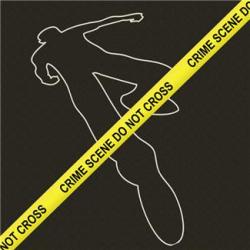Source Institutions
Source Institutions
Add to list Go to activity
Activity link broken? See if it's at the internet archive

The purpose of this lab activity is to demonstrate (through simulation) how DNA fingerprinting (or DNA profiling) might be used to solve a crime. Learners perform restriction digests on DNA samples from four individuals, and then search for similarities between the individuals by running the restriction fragments on an electrophoresis gel. This activity does not do a true DNA fingerprint. It simulates two of the three steps of DNA fingerprinting: restriction of DNA sample and separation by electrophoresis. This activity does not make use of the third step, the radioactive probes. In order to make DNA fingerprinting affordable, lambda DNA is used instead of plasmids. This means that the instructor has to switch the labels on the samples given to the learners. What is labeled DNA is actually the different restriction enzymes and what is labeled restriction enzyme is the lambda DNA. Although there is some deception on the part of the instructor, learners are able to do a restriction digest that simulates a crime scene which adds interest for the learner.
- 10 to 30 minutes
- 2 to 4 hours
- Over $20 per group of students
- Ages 14 - 18
- Activity, Experiment/Lab Activity, Lesson/Lesson Plan, Simulation
- English
Quick Guide
Materials List (per group of students)
- 40 ul. EcoRI
- 20 ul. BamHI
- 20 ul. HindIII
- 120 ul. lambda DNA (0.5 mg/ml)
- 200 ul. 2x compromise restriction buffer
- 20 ul. loading dye
- 0.8% agarose (4 g. agarose/ 500 ml. TBE buffer)
- 5 liters 1X TBE Buffer
- Carolina Blue stain
- 50 microcentrifuge tubes
- 10 0.5 - 10 ul. micropipettes and tips
- 37oC water bath
- 10 sets electrophoresis equipment
- 10 microtube racks
- hot plate with magnetic stirrer or microwave oven
Subjects
-
Life Sciences
- Cells
-
Heredity and Genetics
- DNA Structure and Function
-
Physical Sciences
- Chemistry
-
The Nature of Science
-
The Scientific Process
- Conducting Investigations
- Gathering Data
- Formulating Explanations
- Communicating Results
-
The Scientific Process
Informal Categories
- Crime Science
Audience
To use this activity, learners need to:
- see
- see color
- read
- touch
Learning styles supported:
- Involves teamwork and communication skills
- Involves hands-on or lab activities
Other
This resource is part of:
Access Rights:
- Free access
By:
- Conley, Thomas J.
Rights:
- All rights reserved, Access Excellence @ the National Health Museum, 2009
